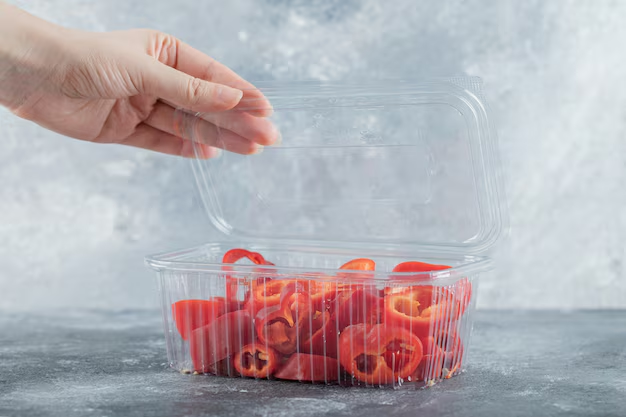Discovering the Shelf Life of Tartar Sauce: How Long Does It Really Last in the Refrigerator?
Whether you enjoy it with a crispy fish fillet or as a tangy complement to your seafood platter, tartar sauce is a culinary staple many of us keep in our refrigerators. Often left lingering behind ketchup and mustard, this piquant sauce might occasionally leave us questioning its viability. Just how long is too long when it comes to keeping tartar sauce in the refrigerator? Join us as we explore this delicious topic, guiding you through everything you need to know about storing tartar sauce, extending its shelf life, and ensuring it remains as fresh as possible.
🥣 What Exactly Is Tartar Sauce?
The Ingredients You’ll Find
Tartar sauce is traditionally a creamy condiment that compliments a range of dishes with its distinctive taste and texture. It typically includes a blend of the following ingredients:
- Mayonnaise: the base offering creaminess and richness.
- Pickles or Relish: provide tanginess and a bit of crunch.
- Capers: add an additional acidic zing.
- Lemon Juice: for fresh acidity.
- Herbs (such as dill or tarragon): introduce fresh flavors, enhancing the overall profile.
These key ingredients not only define its characteristic taste but also affect its storage requirements and shelf life.
Homemade vs. Store-Bought
- Homemade Tartar Sauce: Generally fresher but with a shorter shelf life. It tends to involve fewer preservatives, thus requiring more careful storage.
- Store-Bought Tartar Sauce: Often comes with added preservatives, granting it a longer shelf life. However, flavor can differ slightly from the homemade version.
🕒 How Long Does Tartar Sauce Last?
The Refrigerator Environment
Tartar sauce, much like other mayonnaise-based sauces, depends on refrigeration to inhibit the growth of harmful bacteria and prolong freshness. Properly stored in the refrigerator, tartar sauce can last:
- Opened Store-Bought Tartar Sauce: Usually remains fresh for up to six months. Consult the expiration date as an initial guide, and observe for signs of spoilage.
- Homemade Tartar Sauce: Enjoy within one to two weeks for optimum flavor and food safety.
Identifying Signs of Spoilage
Being able to recognize when tartar sauce is no longer safe to consume is crucial:
- Odor: Off-putting or sour smells indicate spoilage.
- Texture: A watery or separated consistency suggests compromised integrity.
- Color: Discoloration, such as yellowing, often means it’s best to discard.
- Mold: Any presence of mold is a definite sign to throw it away.
🧊 Tips and Tricks for Extending the Life of Tartar Sauce
Storage Best Practices
Following a few simple storage steps can ensure your tartar sauce remains fresh:
- Consistent Temperature: Always keep tartar sauce refrigerated, never at room temperature for extended periods.
- Seal it Right: Airtight containers help reduce exposure to air and bacteria.
- Shelf Placement: Store on a middle shelf for consistent cooling—avoid door storage where temperatures fluctuate.
Practical Usage Tips
- Use a Clean Spoon: Prevent contamination by using a clean utensil every time.
- Limited Out-Of-Fridge Time: Post opening, limit time at room temperature to preserve its integrity.
🔍 Related Storage and Safety Considerations
Cross-Contamination Awareness
Prevent cross-contamination by ensuring other foods or utensils do not come into contact with tartar sauce unless they’re meant to.
Considering Dietary Restrictions
For those with dietary needs, checking ingredient labels on store-bought sauces ensures compliance with lifestyles or allergies, leading to safer consumption. Opt for homemade versions to control ingredients precisely.
🔄 Other Shelf Life Comparisons
Mayonnaise and Other Creamy Condiments
By examining the shelf life of other similar products:
- Mayonnaise: Lasts about two months refrigerated after opening.
- Ranch Dressing: Typically remains safe for one to two months in the fridge post-opening.
- Aioli: Like homemade tartar sauce, best consumed within a week or two of making.
📋 Quick Reference: Tartar Sauce Storage and Tips
Here’s a handy guide for preserving the freshness of your tartar sauce and recognizing when it’s time to let it go:
- Storage: Always refrigerate, and keep sealed tight.
- Shelf Placement: Prefer a stable, middle shelf within the fridge. 🚪
- Signs of Spoilage: Off smell, discoloration, or mold are red flags. 🚫
- Usage Note: Use a clean spoon to avoid contamination. 🥄
- Open Life Expectancy:
- Store-bought: Up to six months in the refrigerator.
- Homemade: One to two weeks when refrigerated.
With these tips in mind, you’re equipped to keep your tartar sauce fresh and safe to enjoy, enhancing your culinary creations with confidence. Remember to trust your senses and prioritize proper storage for the best experience.
Understanding the nuances of tartar sauce’s longevity aids in maximizing its delicious potential while ensuring food safety. As someone who enjoys savoring a well-kept condiment, knowing the essentials about storage and spoilage becomes invaluable.
